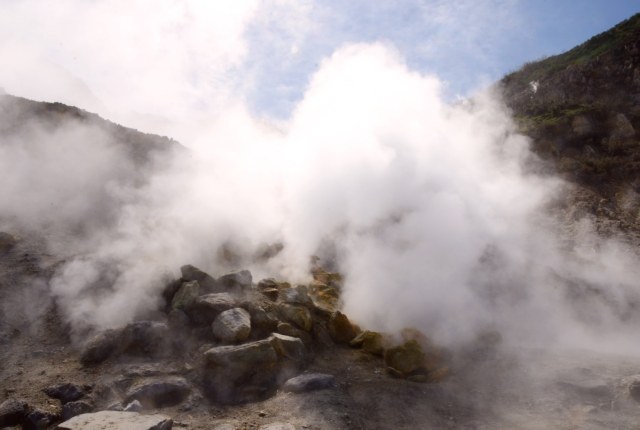About 40,000 years ago, in the Phlegraean Fields area, the ‘Campanian Ignimbrite eruption’ occurred – it was the largest volcanic eruption ever registered in the Mediterranean region. Being such a powerful and relevant event, it has long been considered a possible factor of change and innovation in the cultural behaviours of the first Homo sapiens in Europe.
A recent analysis of the artefacts found in the Grotta di Castelcivita (in the Salerno province) refutes this hypothesis. The study was published in Scientific Reports and led by Armando Falcucci, University of Tübingen, and Adriana Moroni, University of Siena, together with researchers from the University of Bologna. The team found that traces of the cultural development, which was thought to have occurred only after the large eruption of the Phlegraean Fields, are already present in the archaeological layers preceding the volcanic event.
"Using cutting-edge technologies, we were able to meticulously reconstruct the way the stone tools found were manufactured, thus demonstrating that the cultural development observed in the Grotta di Castelcivita predates the deposition of the volcanic layers", explains Armando Falcucci, researcher at the University of Tübingen, Germany, and first author of the study. "The results we have obtained thus challenge the long-standing speculation that sudden natural events would cause significant behavioural changes throughout the entirety of human prehistory".
The Palaeolithic culture known as ‘Aurignacian’ is a technological complex attributed to Homo sapiens, which extends on a large geographic area including Europe and part of the Middle East. The development of this culture, marked for example by the crucial shift from Proto-Aurignacian to Early Aurignacian, has often been considered a result of the adaptation to significant climatic and environmental changes.
The regions of southern Italy have long been considered an ideal place to better understand these dynamics, due to both the large number of archaeological sites and the presence of several volcanoes. Indeed, the eruptions that occurred throughout prehistory produced layers of volcanic material found in archaeological sequences, facilitating the establishment of a solid chronology.
Among these eruptions, the most significant in the transitional period from Proto-Aurignacian to Early Aurignacian is the Campanian Ignimbrite one, which involved the Phlegraean Fields area. One of the most relevant traces of that event is found among the sequences uncovered in the Grotta di Castelcivita, where archaeological explorations, began in 1975 and still ongoing, are conducted under a ministerial permit and the scientific direction of Adriana Moroni and Annamaria Ronchitelli from the University of Siena.
"Castelcivita is one of the few archaeological sites where the volcanic ash from this explosive event has sealed the archaeological sequence, preserving it in excellent condition", says Professor Adriana Moroni. "This enabled us to carry out a quantitative analysis of all the layers related to the Aurignacian period, from which it emerged that the technological innovations connected to the Early Aurignacian occurred before the Campanian Ignimbrite eruption".
The scholars do not exclude the possibility that the major eruption that occurred 40,000 years ago in the Phlegraean Fields may have led to further changes in the behaviours and subsistence strategies of the inhabitants of that area. But the analysis results show that the significant cultural changes from the Proto-Aurignacian to the Early Aurignacian were not influenced by that geological event.
"On the whole, this study shows how the cultural processes that led to the Early Aurignacian had already started before the Campanian Ignimbrite eruption and they were thus not influenced by the environmental and climatic changes that followed", highlights Owen Alexander Higgins, PhD student at the University of Bologna and participant in the study.
"This is a significant step towards understanding of Upper Palaeolithic hunter-gatherer societies and their ability to develop sophisticated survival skills in different environments", says Falcucci.
The study has been published in Scientific Reports under the title ‘A pre-Campanian Ignimbrite techno-cultural shift in the Aurignacian sequence of Grotta di Castelcivita, southern Italy’. The University of Bologna was represented by two participants, Simona Arrighi and Owen Alexander Higgins, from the Department of Cultural Heritage.

